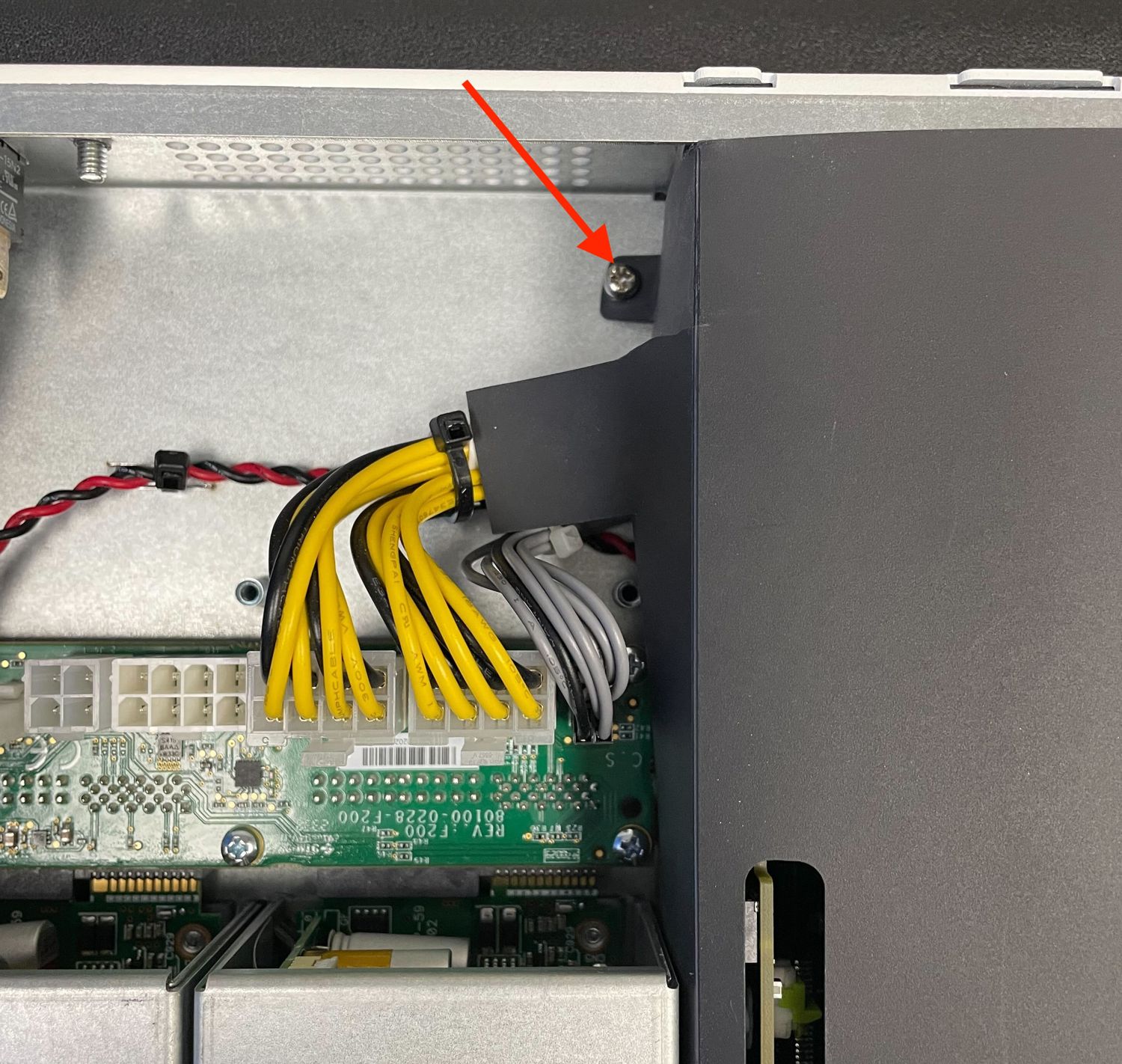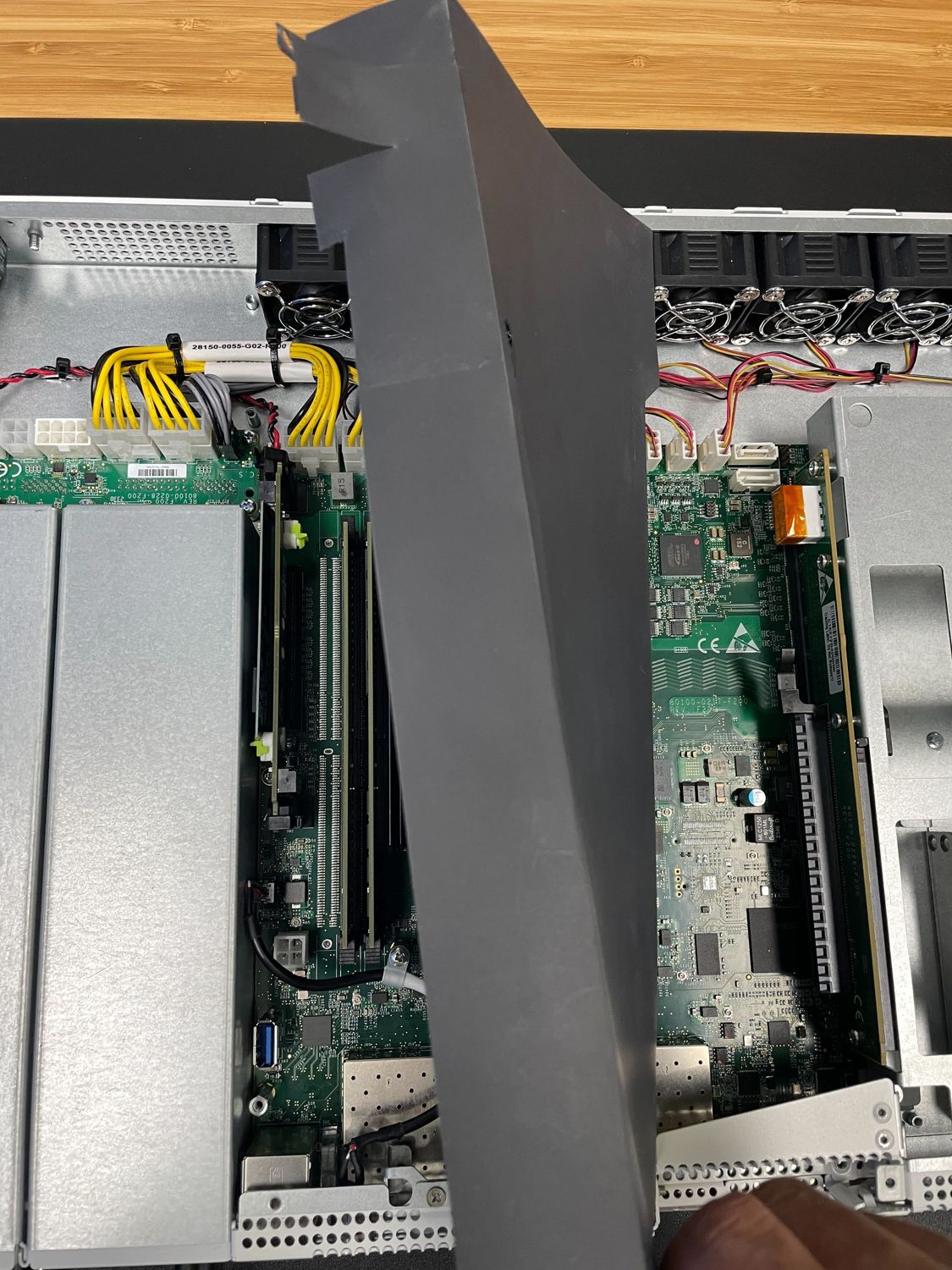M.2 NVMe SSD Installation¶
The Netgate® 8300 ships with one PCIe-based M.2 NVMe SSD. Optionally, a second PCIe-based M.2 NVMe drive can be installed as an upgrade.
Note
This guide assumes a second disk is being added for redundancy via software RAID disk mirroring.
Warnings and Precautions¶
Danger
Anti-static protection must be used throughout this procedure.
Warning
TNSR® software must be reinstalled using a software RAID mirror configuration to use a second M.2 NVMe SSD for redundancy.
Warning
The Netgate 8300 only supports PCIe-based M.2 NVMe storage devices. It does not support M.2 SATA devices.
Danger
Take all appropriate precautions and exercise care when handling the exposed system board and M.2 cards. There are many delicate components which can be damaged during this process. Damage caused via physical contact and electrostatic discharge while performing this installation is not covered by the warranty.
Warning
This device includes an intrusion detection sensor which operates even when the device is without power.
Opening the case on this device triggers an intrusion alarm which is logged by the BMC and is visible in the IPMI sensors. This alarm must be reset manually as described in Re-arm the Chassis Intrusion Switch.
When the intrusion alarm is active the fans run at a fixed speed of around 8500 RPM. Resetting the intrusion sensor alarm returns the fans to their profiled speed.
Required Tools and Hardware¶
Installing an M.2 NVMe SSD in the Netgate 8300 requires the following tools and hardware:
Phillips screwdriver
Anti-static grounding strap and anti-static mat for handling bare M.2 card and 8300 system
1 x PCIe-based M.2 NVMe SSD, 2280 or 2242 size, B+M-key or M-key card
See also
The M.2 slot accepts both 2280 and 2242 size cards, but the device ships with the retaining clip set for a 2280 size card by default. This clip can easily be moved to accommodate a 2242 card without any tools.
Installation Procedure¶
The installation procedure has many steps which are broken down into related groups in the remainder of this document. Follow all steps in the procedure carefully.
Take a Backup¶
If the system contains an existing configuration, then the first step is to take a backup of that configuration for safety.
If the existing configuration is not necessary, this section may be skipped.
There are numerous backup options covered in the TNSR software documentation section on Backup and Restore.
Download the Installer¶
Before proceeding further, download a copy of the TNSR installer using a Netgate Store Account and write the installer to a USB memstick.
Power Off and Disconnect¶
For safety, before opening the case, the Netgate 8300 must be completely disconnected. This includes power, network cables, USB cables, serial console cables, and any other external cables or devices connected to the Netgate 8300.
Danger
Reminder:
Anti-static protection must be used throughout this procedure.
Any hardware damage incurred during this procedure is not covered by the hardware warranty.
Turn power off to the unit by changing the power switch on the rear of the unit to the off position.
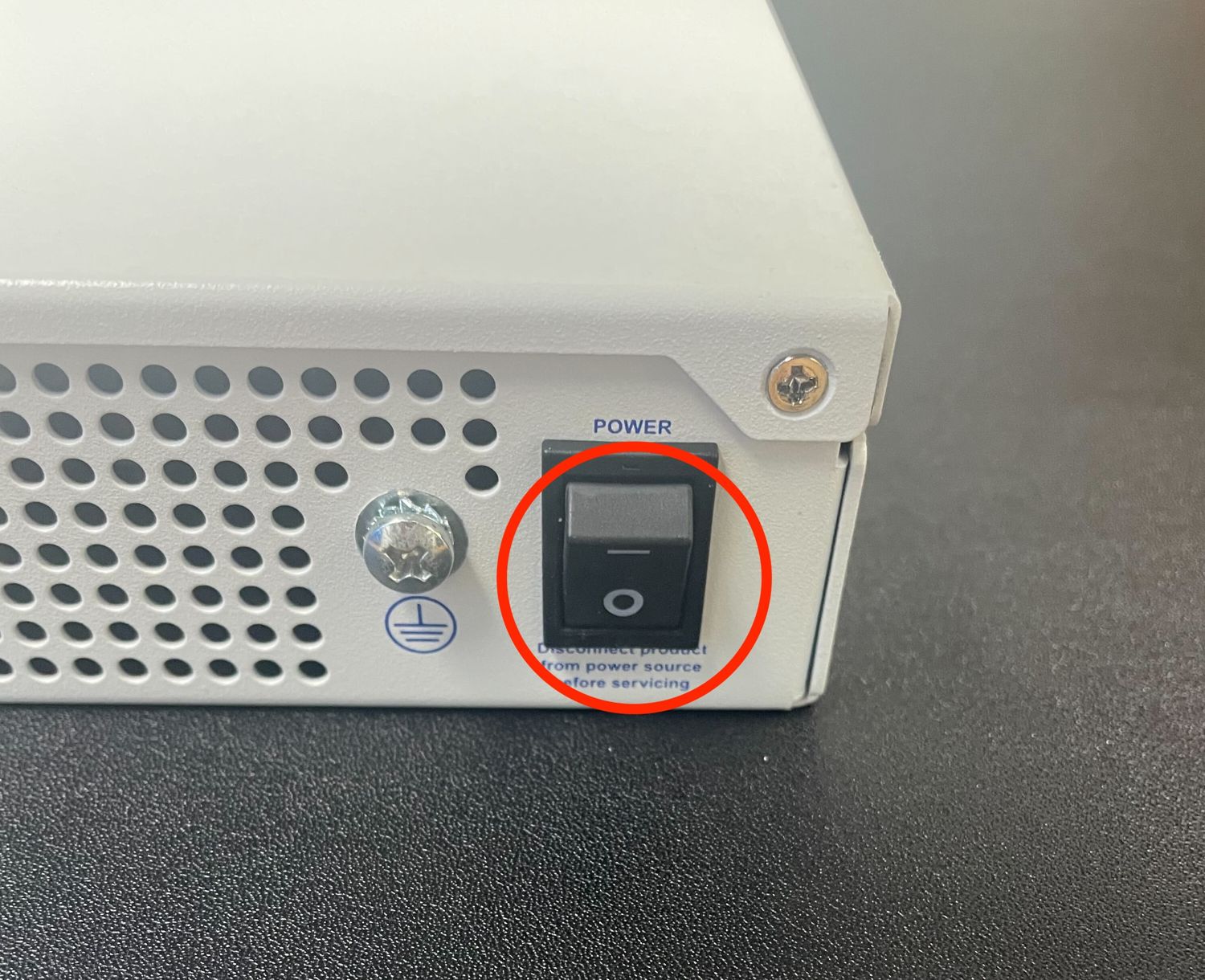
Power switch (circled) in the off position¶
Unplug the power cables from all installed power supply units (PSUs).
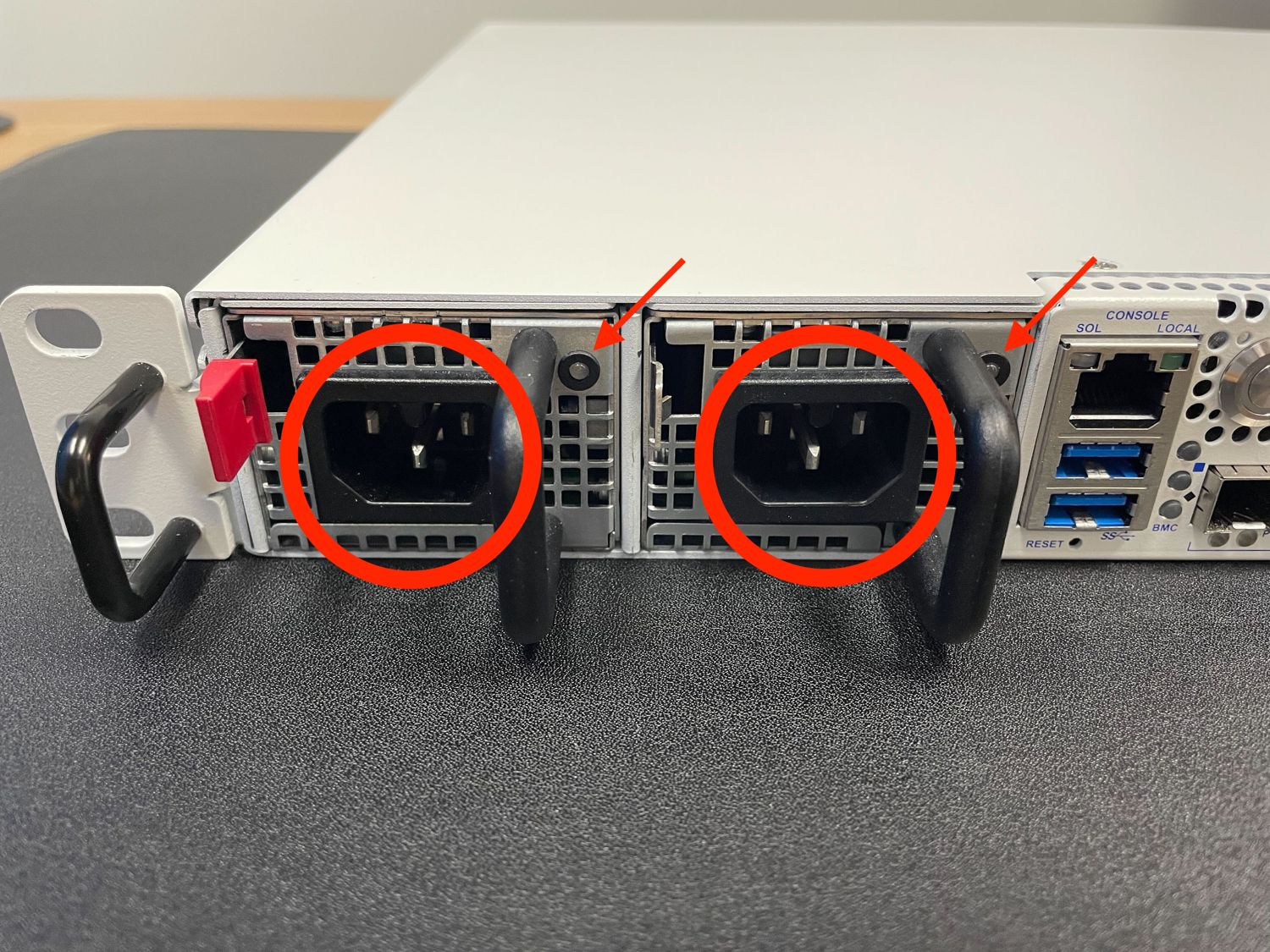
Power Supply Units with power receptacles circled, and status LEDs indicated with arrows¶
Danger
Wait at least 60 seconds after unplugging power to proceed. This ensures that all phantom power has dissipated.
The LED indicator on all installed PSUs should be off before proceeding.
Unplug all network cables, USB cables and devices, serial console connections, etc.
Dismount the Netgate 8300 from the rack
Move the Netgate 8300 to a safe work location such as an anti-static mat
Removing the Lid¶
The next portion of the procedure involves opening the device and removing the lid.
Danger
Reminder:
Anti-static protection must be used throughout this procedure.
Any hardware damage incurred during this procedure is not covered by the hardware warranty.
Remove the screws from the top of the case near the front of the unit using the Phillips head screwdriver.
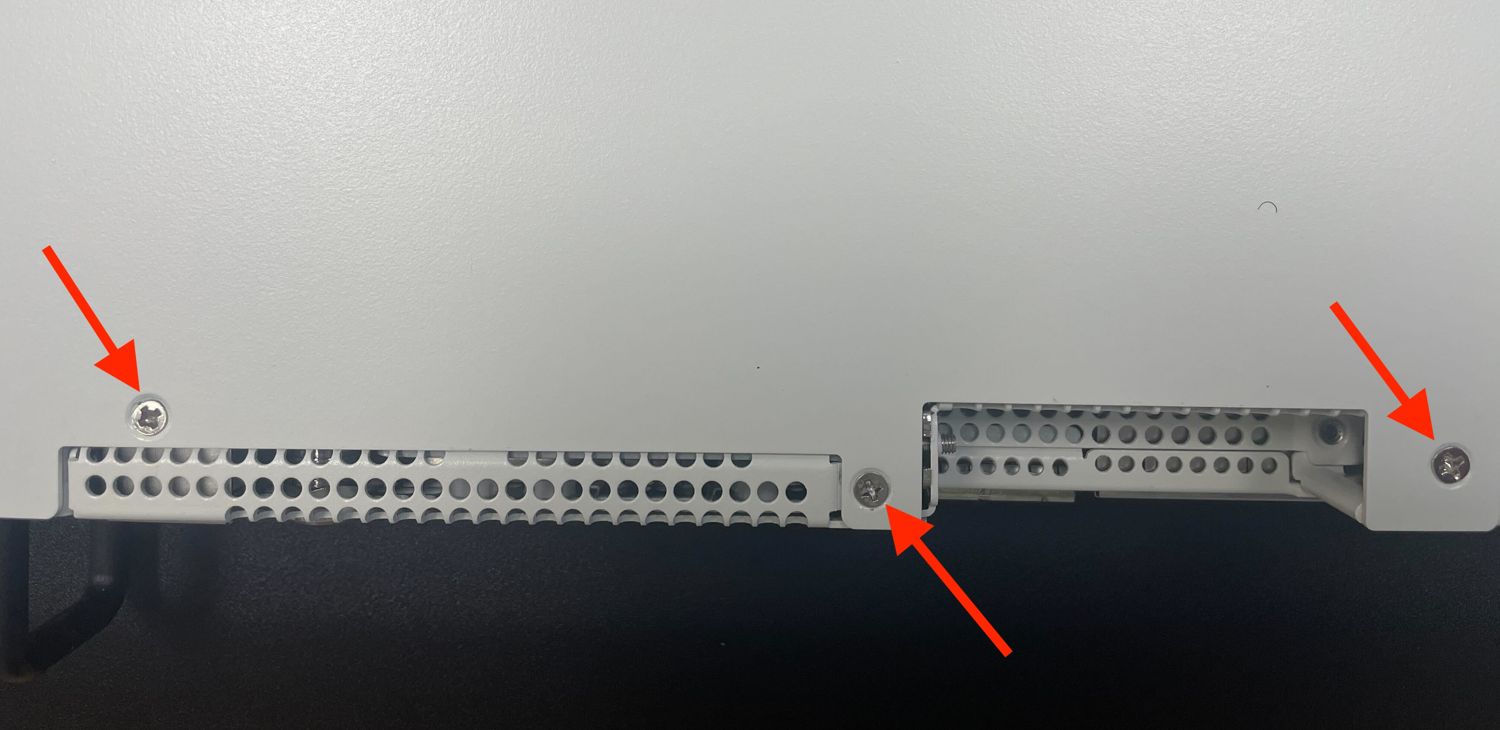
Screws on the top of the cover at the front of the unit, indicated with arrows¶
Remove the screw from the rear side of the unit in the top left corner using the Phillips head screwdriver.
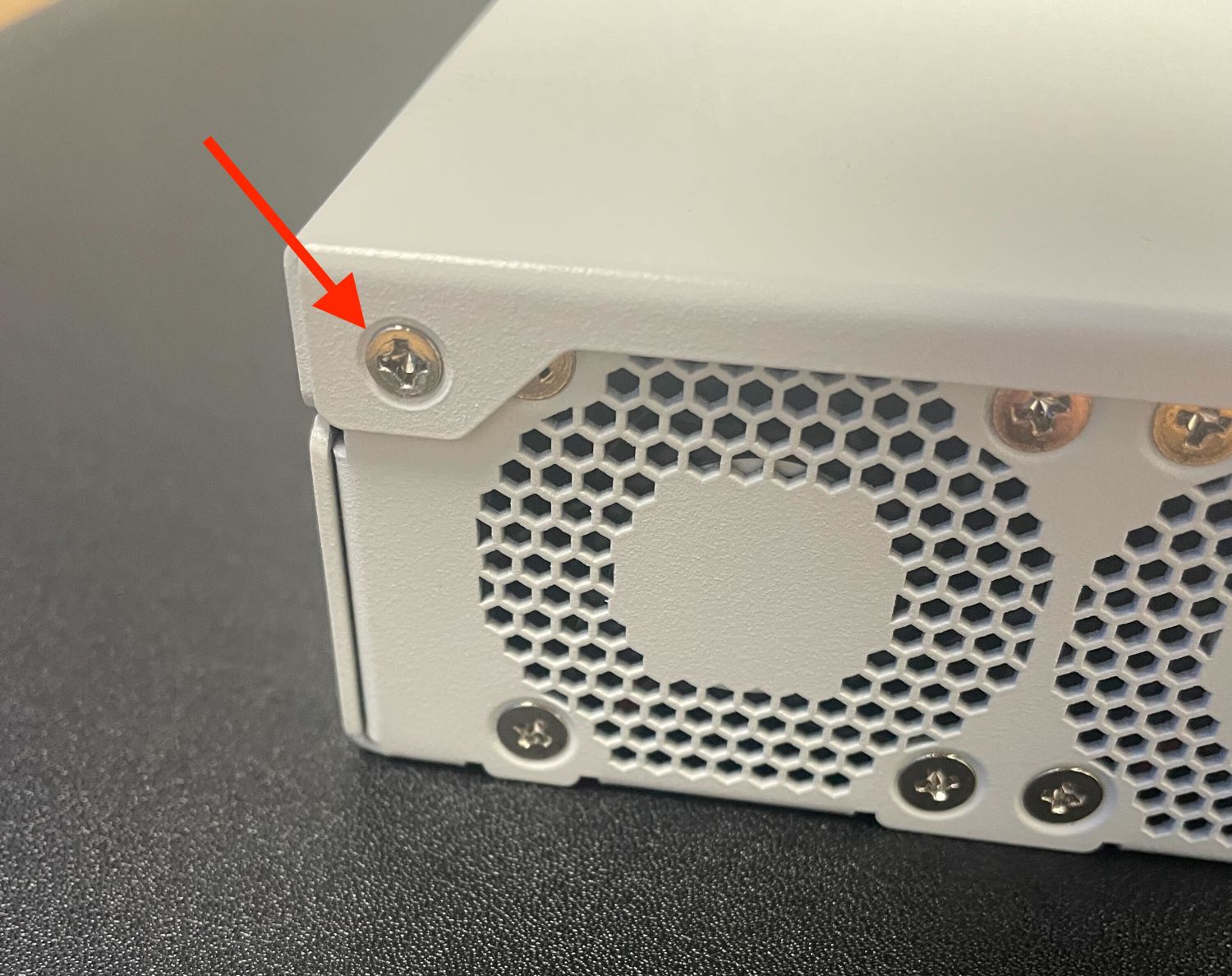
Screw on the rear side of the unit at the left top corner, indicated with an arrow.¶
Remove the screw from the rear side of the unit in the top right corner using the Phillips head screwdriver.
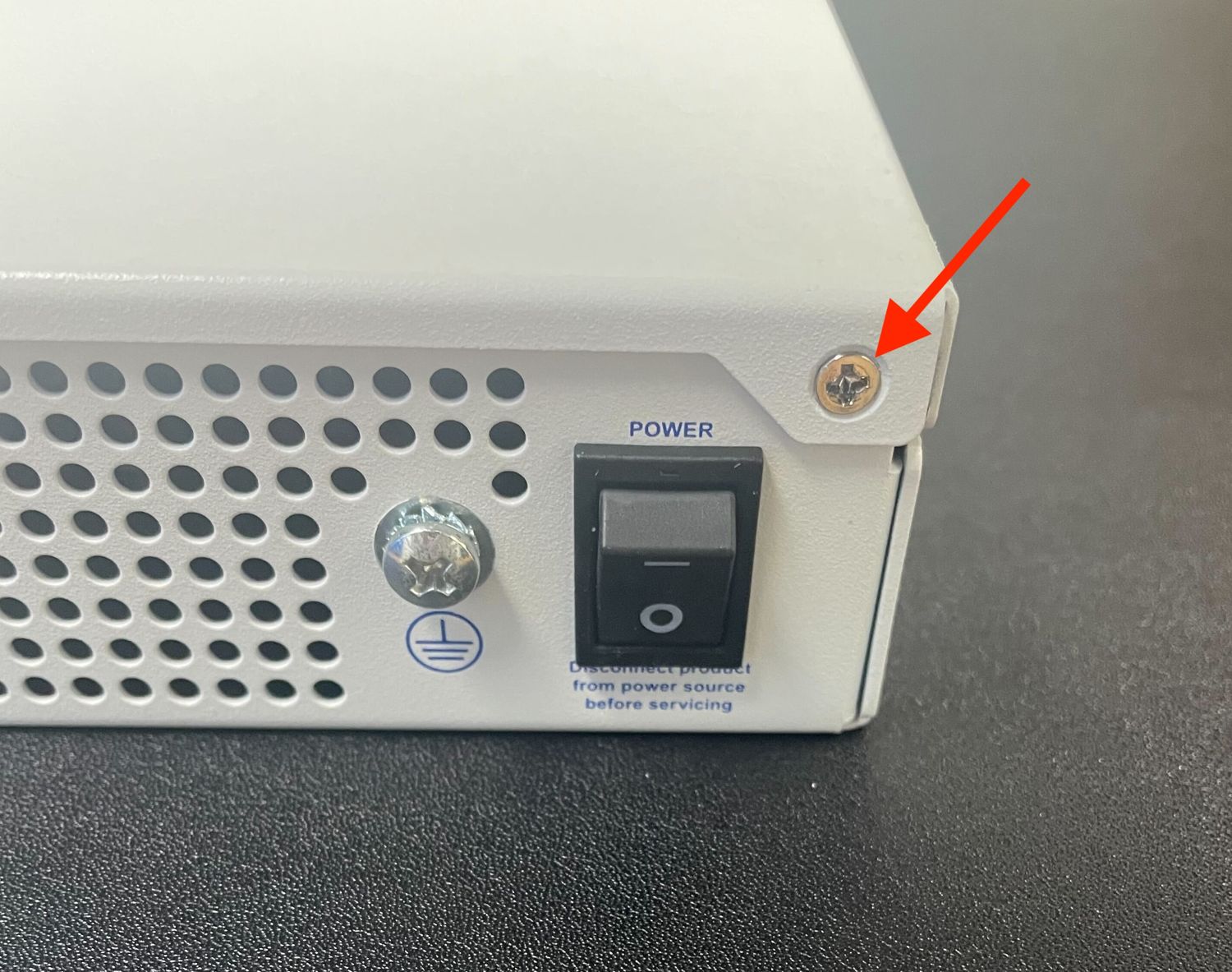
Screw on the rear side of the unit at the right top corner, indicated with an arrow.¶
Slide the top cover back away from the front panel until it stops.
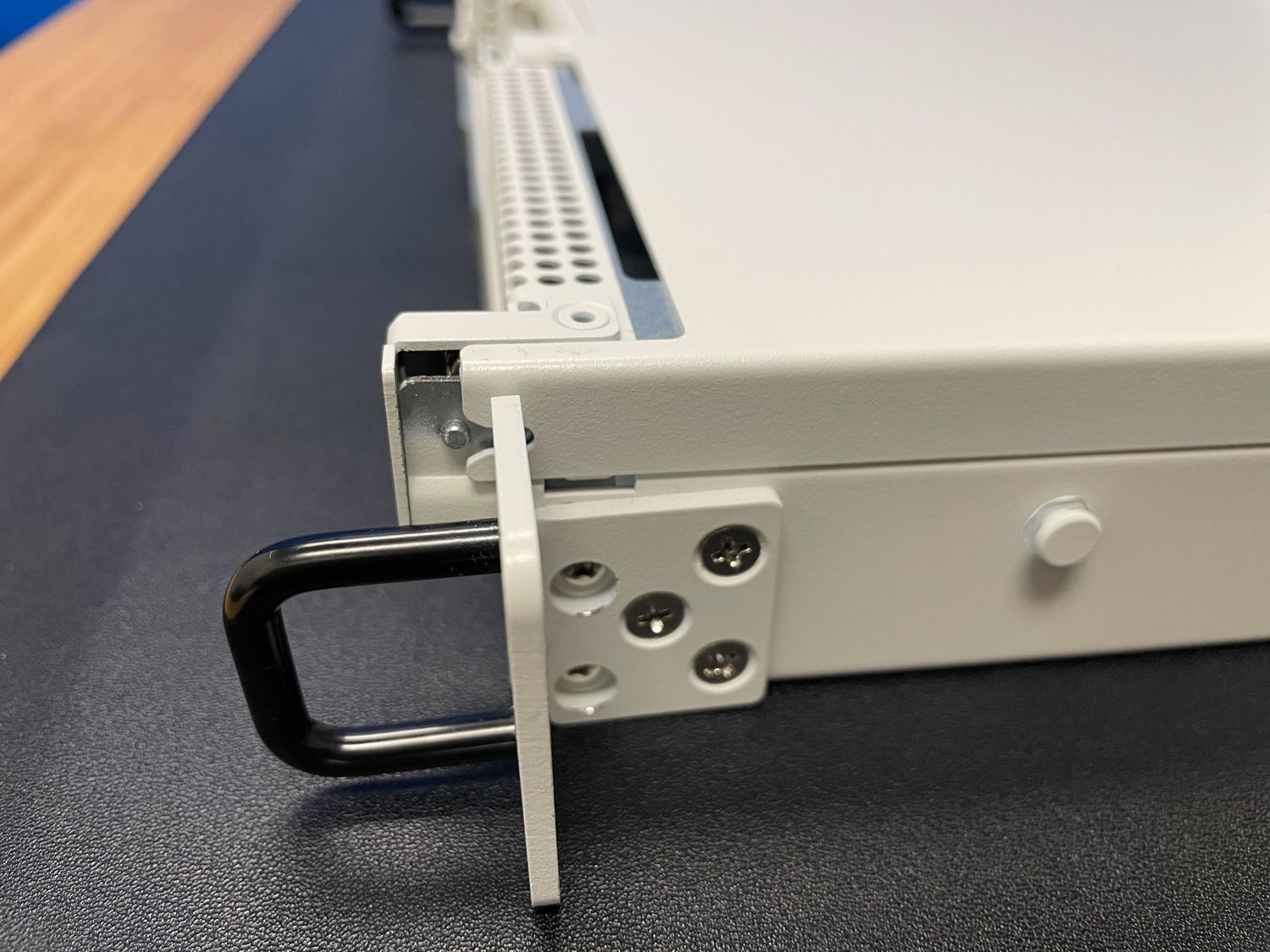
Sliding back the top cover away from the front panel¶
Lift off the top cover and set it aside, keeping it upright to avoid damaging the top surface.
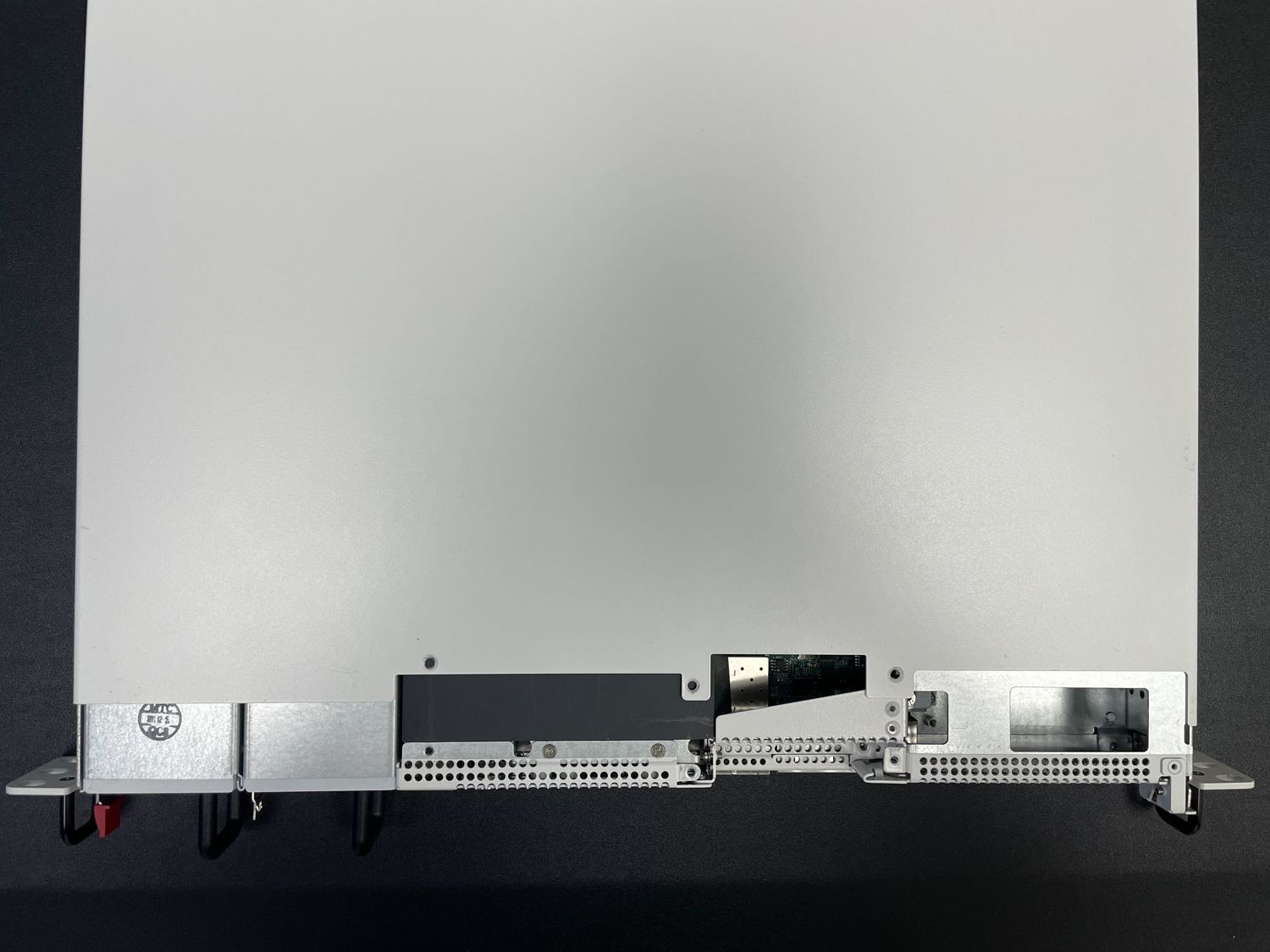
Top cover in position to be lifted off¶
Move the Fan Duct¶
The M.2 NVMe riser card is located under the fan duct. This duct can be moved out of the way sufficiently enough to access the riser without completely removing it from the case.
Danger
Reminder:
Anti-static protection must be used throughout this procedure.
Any hardware damage incurred during this procedure is not covered by the hardware warranty.
Remove the M.2 NVMe Riser Card¶
The M.2 NVMe drives are located on a riser card near the PSU cages. This card must be removed to safely access the SSDs.
Danger
Reminder:
Anti-static protection must be used throughout this procedure.
Any hardware damage incurred during this procedure is not covered by the hardware warranty.
Locate the M.2 NVMe riser card

M.2 NVMe riser card clips (circled) in the closed position¶
Lift both retaining clips holding the riser card in place to release the card

M.2 NVMe riser card clips in the open position¶
Remove the riser card and set it aside
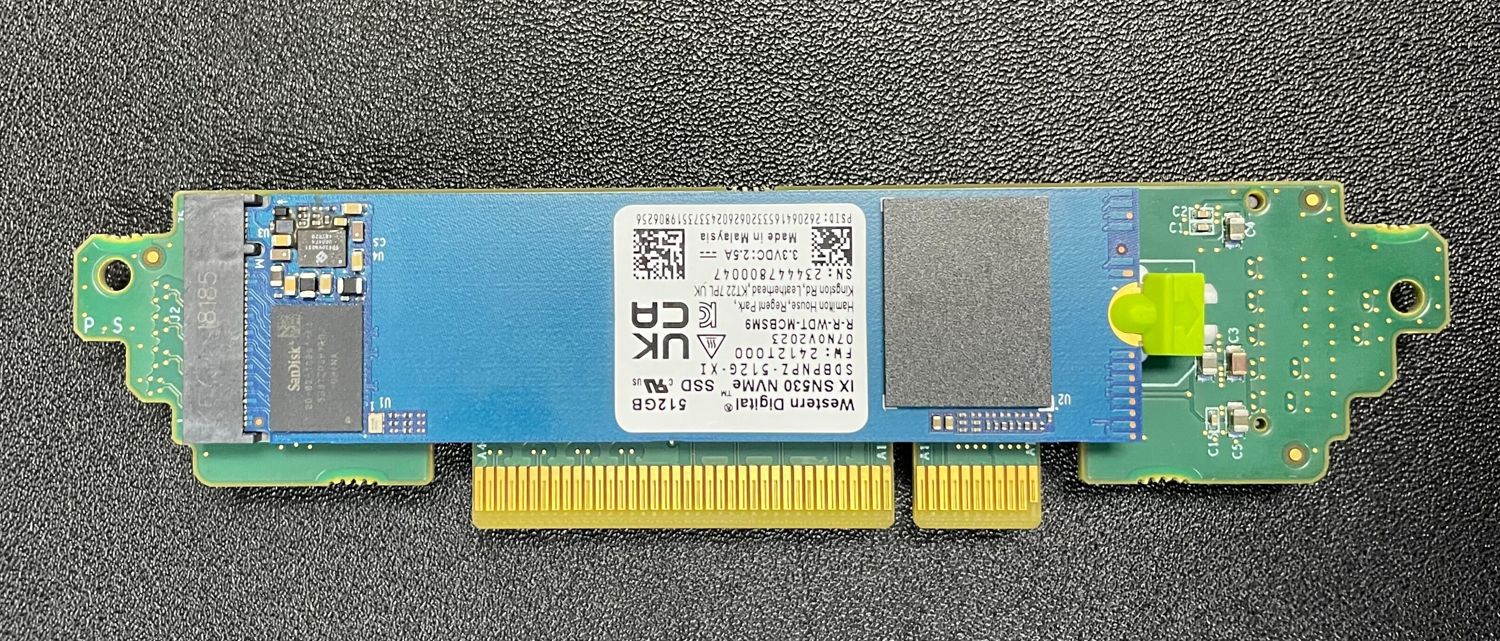
M.2 NVMe riser card slot 1 with the stock SSD installed¶
Install the SSD¶
With the riser card removed, it is time to install the SSD.
Danger
Reminder:
Anti-static protection must be used throughout this procedure.
Any hardware damage incurred during this procedure is not covered by the hardware warranty.
Turn the riser card over so the second M.2 slot is visible.
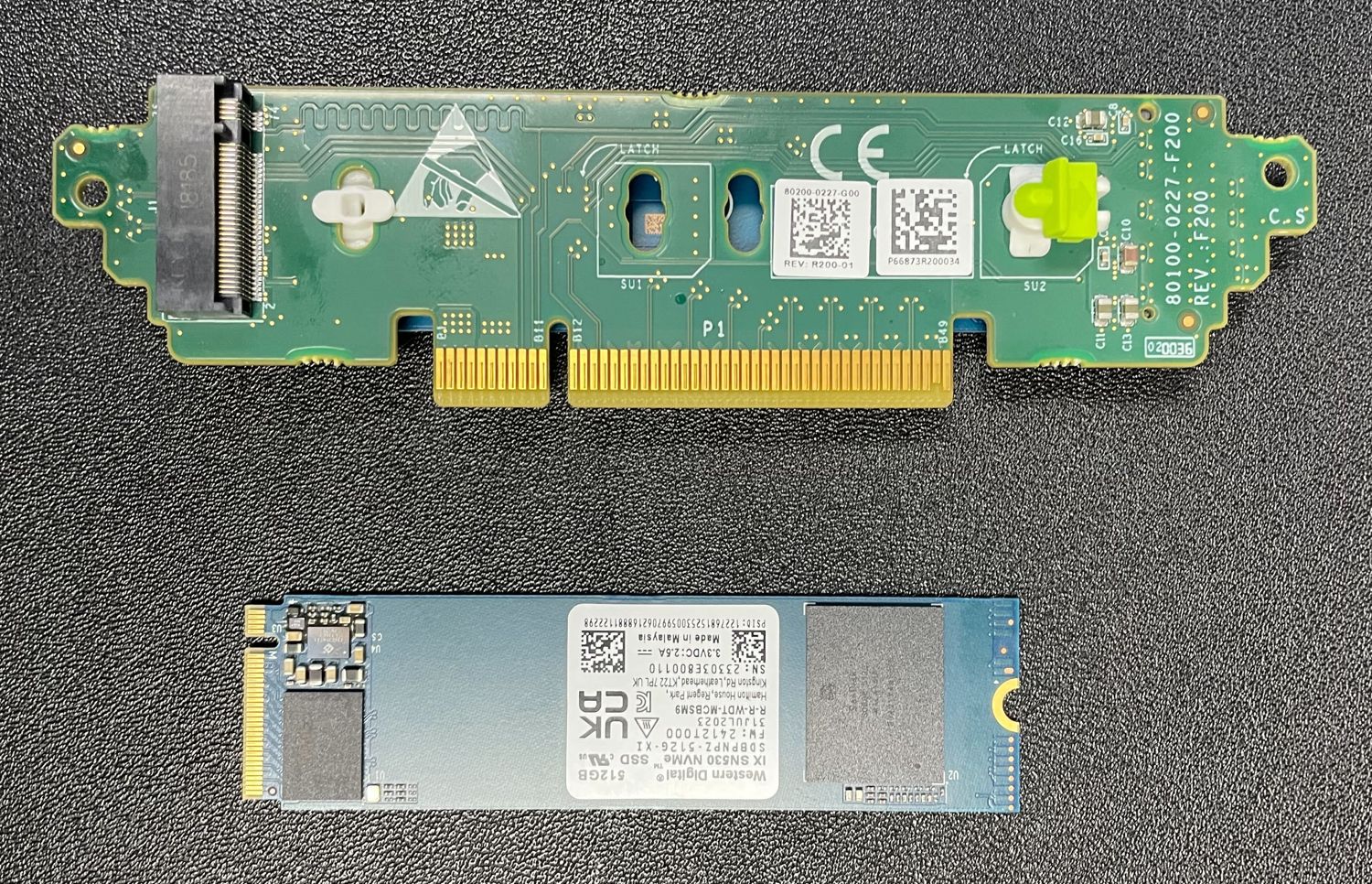
M.2 NVMe riser card slot 2 (empty) and add-on M.2 NVMe SSD before install¶
Note
As mentioned earlier in this document, the Netgate 8300 currently supports M.2 B+M-Key or M-Key PCIe NVMe SSDs in 2280 or 2242 sizes.
Move the retainer clip to match the SSD size being installed.
The M.2 slot accepts both 2280 and 2242 size cards, but the device ships with the retaining clip set for a 2280 size card by default.
This clip can easily be moved to accommodate a 2242 card without any tools.
If the card being installed is a 2280 size card, these steps are unnecessary.
Rotate the retaining clip 90 degrees counterclockwise to release it.
Lift the retaining clip away from the riser.
Insert the retaining clip in the 2242 position hole outlined in white on the riser.
Rotate the retaining clip 90 degrees clockwise to lock it in place.
Insert the M.2 card into the empty socket at an approximate 30° angle
Warning
M.2 cards are keyed. Do not force an M.2 card into a slot with mismatched keying.
Refer to M.2 Edge Connector Keying for a depiction of the different M.2 key types.
Gently push down the M.2 NVMe card until it snaps into place against the retaining clip.
There should be an audible “snap” sound as the retaining clip locks the drive into position.
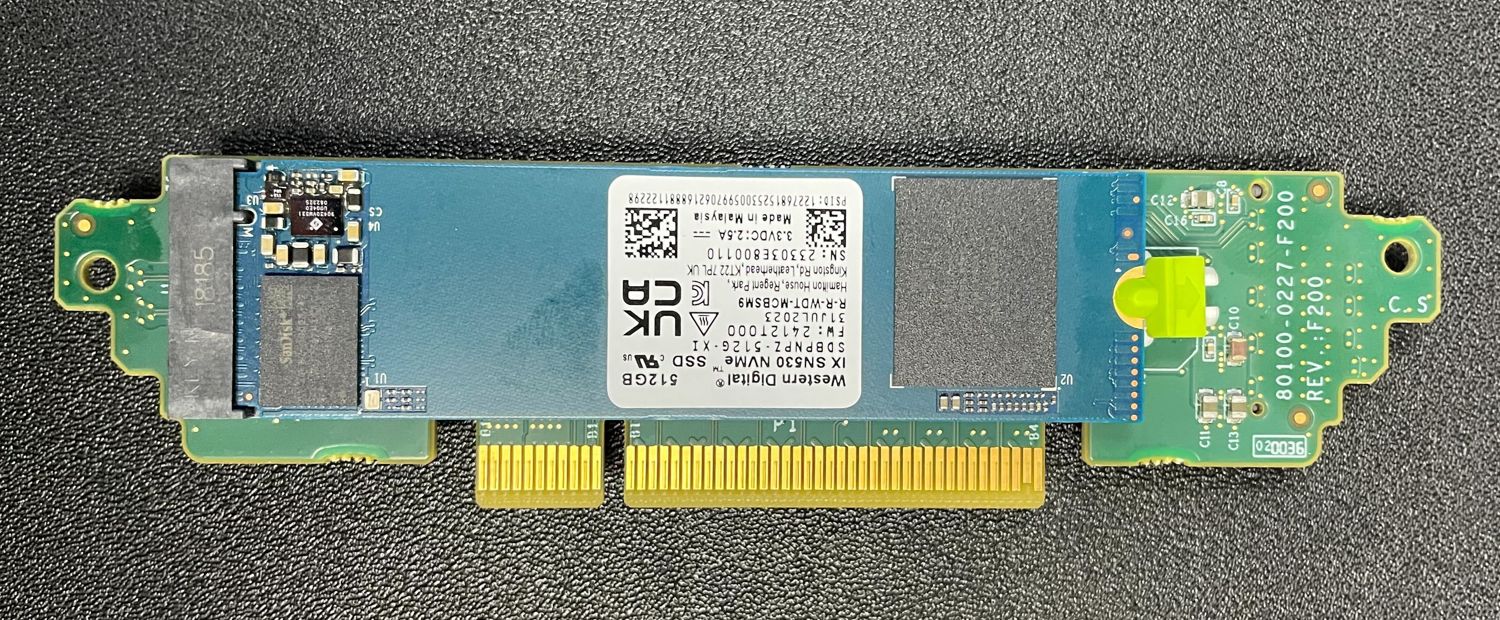
M.2 NVMe riser card slot 2 with the add-on SSD installed¶
Danger
Ensure that the retaining clip is fully engaged to avoid damaging the SSD!
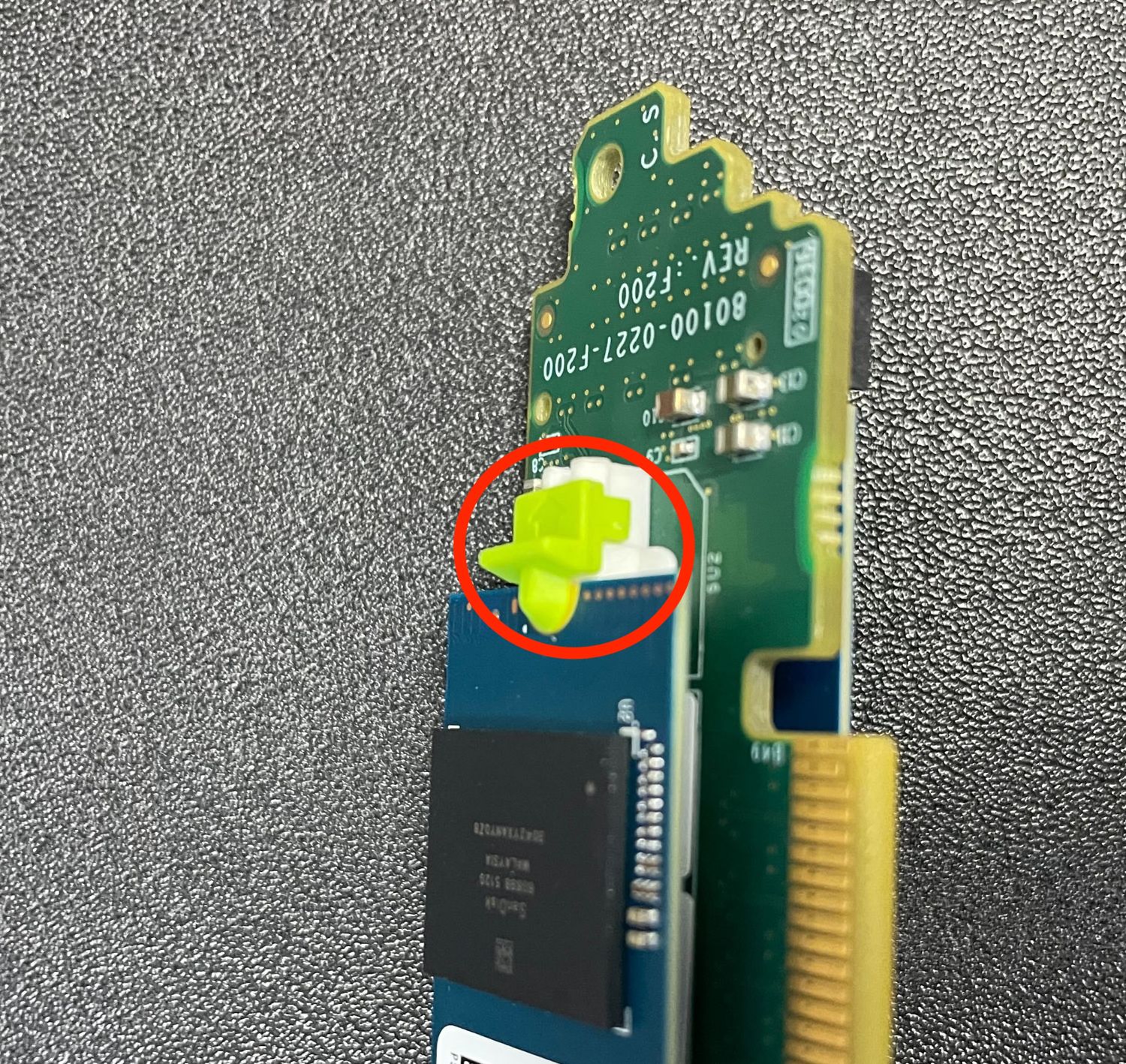
Close-up view of the M.2 retaining clip for slot 2 with the SSD secured¶
Replace the M.2 NVMe Riser Card and Fan Duct¶
With the new SSD installed, replace the riser card.
Danger
Reminder:
Anti-static protection must be used throughout this procedure.
Any hardware damage incurred during this procedure is not covered by the hardware warranty.
Insert the riser card back into its slot on the motherboard
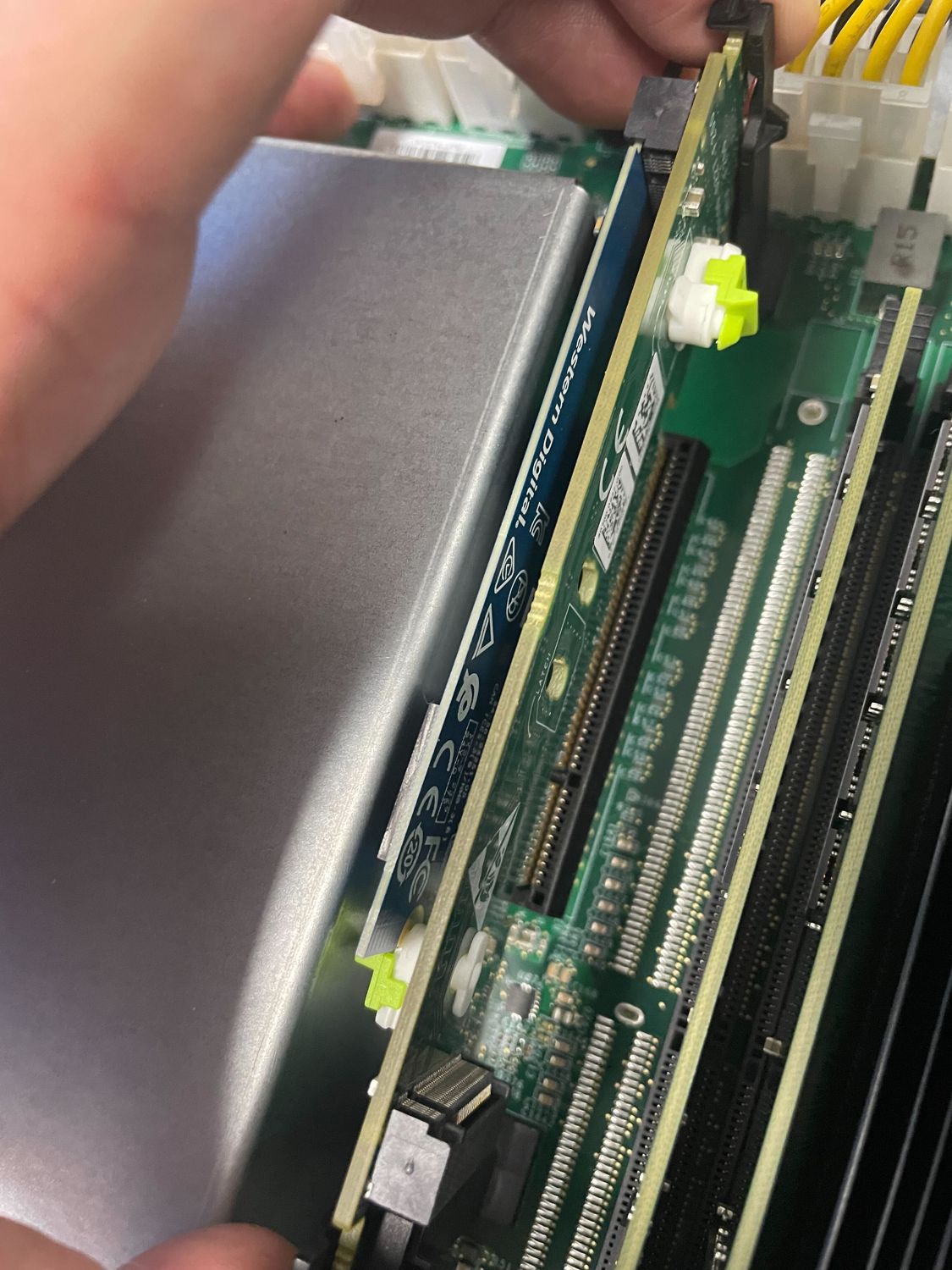
Replacing the M.2 riser card¶
Close the retaining clips to secure the riser card.
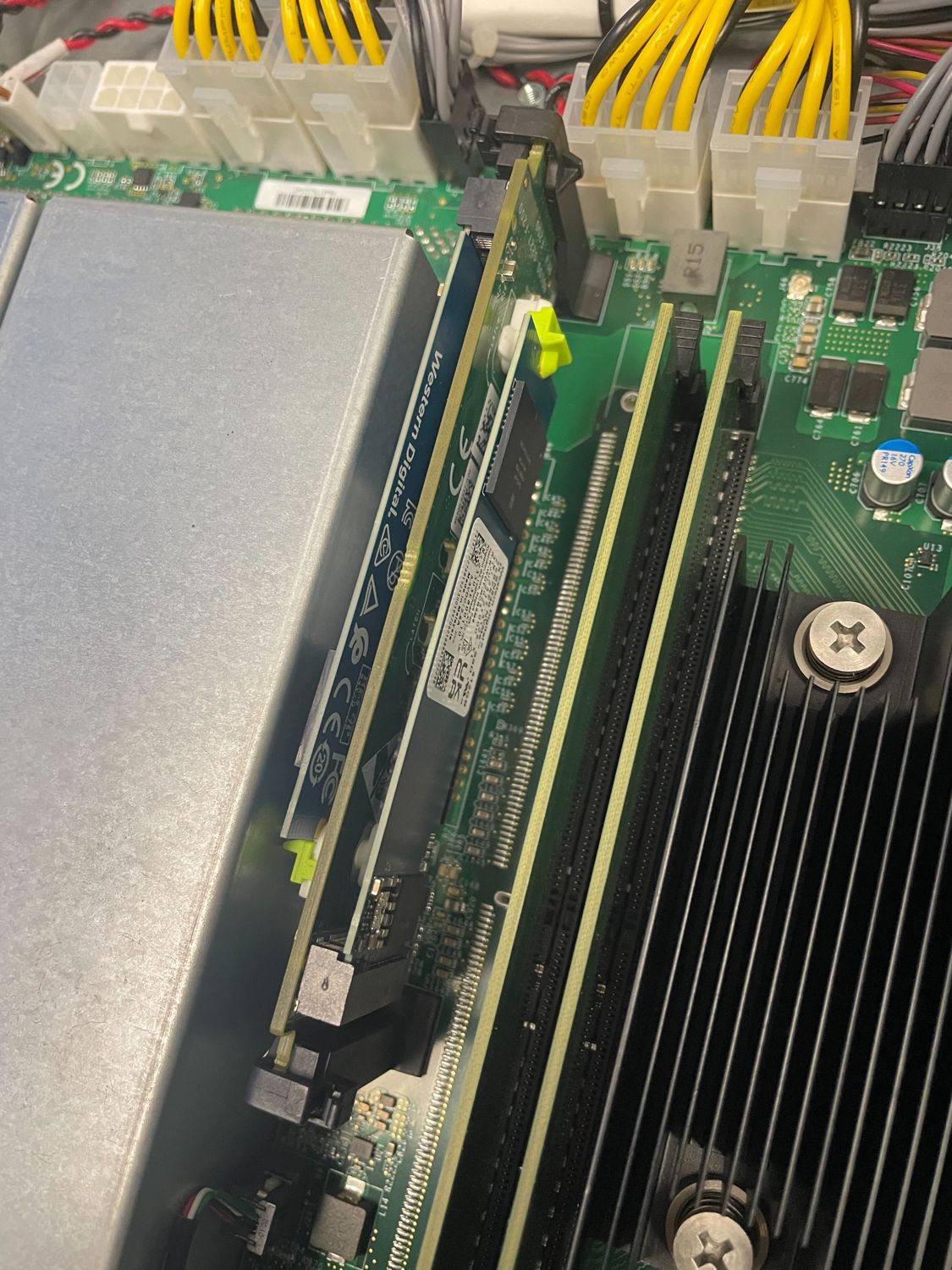
M.2 riser card with two SSDs and riser clips in the closed position¶
Move the fan duct back to its original location.
Secure the fan duct with its screw using the Phillips head screwdriver.
Replacing and Fastening the Lid¶
With the internal components all in place, the next step is to replace the lid and all its fasteners.
Danger
Reminder:
Anti-static protection must be used throughout this procedure.
Any hardware damage incurred during this procedure is not covered by the hardware warranty.
Align the top cover with the top of the unit, a short distance behind the front panel.

Top cover in position to be replaced¶
Slide the top cover toward the front of the unit into its closed position.

Slide the top cover back toward the front panel¶
Replace the screws on the rear of the unit (left and right top corners) using the Phillips head screwdriver.

Screw on the rear side of the unit at the left top corner, indicated with an arrow.¶

Screw on the rear side of the unit at the right top corner, indicated with an arrow.¶
Replace the screws on the top of the unit using the Phillips head screwdriver.

Screws on the top of the cover at the front of the unit, indicated with arrows¶
Reconnect¶
The device is now ready to be put back into its former location.
Mount the Netgate 8300 in the rack
Plug in all network cables, USB cables and devices, serial console connections, etc.
Insert the USB memstick containing the installation media
Plug the power cables into all installed power supply units.

Power Supply Units with power receptacles circled, and status LEDs indicated with arrows¶
Turn power on to the unit by changing the power switch on the rear of the unit to the on position.
Reconnect to the serial console
Reinstall TNSR Software¶
Note
This section assumes the new disk will be used as a part of a mirrored disk pair using software RAID. If the new disk is for additional storage, consult the operating system documentation for instructions on formatting and mounting an additional disk.
With the device back together and ready to proceed, the next step is to reinstall TNSR software using the new SSD and the existing SSD as a software RAID mirror.
Warning
This action requires reformatting the existing drive and reinstalling TNSR software. All data on the existing installation will be lost, so back up any important data before proceeding.
Follow the procedure in Installing TNSR Using Software RAID to complete the setup.
Restore the Configuration¶
If a configuration was backed up earlier in this procedure, now is the time to restore the configuration using the method described in the TNSR software documentation section on Backup and Restore.
Re-arm the Intrusion Sensor¶
Opening the case to install the new drive will have triggered the intrusion alarm sensor, even when the device was removed from power. The intrusion alarm causes the fans to run at a higher fixed speed until the sensor is re-armed.
Once TNSR software is up and running, follow the procedure in Re-arm the Chassis Intrusion Switch to reset the sensor.
